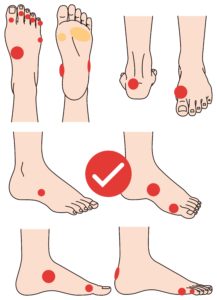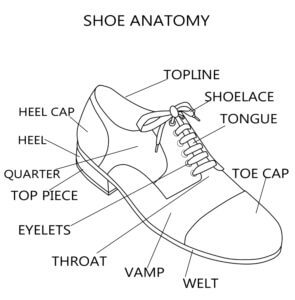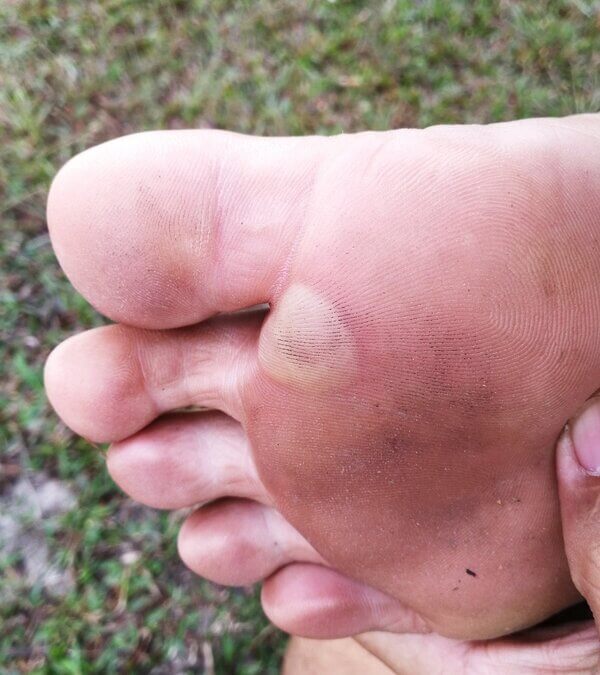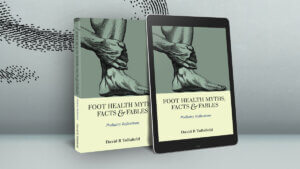Ruining a Good Walk!
You put up with the increasing discomfort, but by now, that walk that you set out and look forward to is far from fun. There is a reluctance to take the shoe or boot off. If you dare to look, you know that you might not get that shoe back on! Back home, the footwear is removed, and the sock seems to have stuck. You survey the damage once the material has been unglued from the skin. A blister has formed, and ugh, you look at the raw red skin, bright, moist and stingy… what now?
Blisters are common and are associated with friction. Essentially, the more resistance over the skin surface, the more damage that arises on the skin through tearing and heat generation. The process of a force that occurs at one point prevents gliding over the skin surface. When I taught students podiatric medicine, I simply said; think of ice. The foot slips easily as there is no resistance between the surfaces with ice. But two dry surfaces resist easy movement. Rather than yield, they meld together with movement, setting up the heat. Simple? Er, no…
Breaking in shoes
New shoes are one factor. I love my walking boots. They are heavy-duty and made of quality leather, but they took a while to become comfortable. Sure, I tested them in the shop, but that is no substitute for getting out there and trialling them on different terrain. All this takes time. It is only when you go for that long walk that you realise there is no going back.
So is there a solution? Well, Footlocker wanted to consider our options and come up with a bit of self-help advice. But as far as that ‘breaking them in’ well get the choice wrong and they will break your skin, not the shoes! If you know the foot is likely to clash with the skin and shoe, DO NOT BUY THE SHOE no matter how lovely and stylish that shoe appears.
Three elements to understanding the prevention of blisters
The skin
The surface of the skin is ONE element, the SECOND element is the material that our footwear is made from. The THIRD element is walking. That is to say, the time to walk, the type of terrain and the existing conditions.
If you live in the UK you know we swing between wet and soggy, to dry and hard on the ground. Wet and soggy means you slip everywhere. Dry and hard means if your foot hits a rut or ledge of dry earth, the foot can teeter all over the place. In another article on walking I shall expand on the ankle, its function and why it goes over.

identify these locations of pain and prevent blisters
Footwear
Shoe fit is important because there are several places where the foot will rub. The red areas in the diagram all relate to typical anatomical locations where blistering arises. These are marked in red. The area marked in yellow under the ‘ball’ of the foot can be blistered or can hurt due to callus or deeper damage called a bursa.
Bursa. Let us think of the bursa as a deep blister that is not visible to the inexperienced observer. The toes are often deformed, bent, and rubbed inside the shoe’s toe box. The bump over the bunion means it easily resists shiny new stiff leather, as does the outside of the foot if it is prominent around the joint (Tailor’s bunion).
Unusual locations. The bone projects (see the left side of the white tick in the red circle) on the outside of the foot This is less likely to cause a problem in most people unless the bone is enlarged. To the right side of the same circle, a large area of bone sits above the arch and this is a frequent target of rubbing from the inside of the shoe (facings and quarter).
The first rule in combatting the skin is to prevent rubbing. Therefore, it is important to understand that each of the circles must be protected or should be accounted for when selecting footwear.

The shoe has parts that are designed to resist wear and tear. If the red spots come into contact with an unyielding shoe, then friction occurs and a
blister follows within a short time.
The heel cap or counter relates to care for the back of the heel (tendon and bone). The tongue, vamp and throat can irritate a foot bump on top of the foot. The tongue, if pulled too tight, will draw the eyelets in and compress on any foot bump that gets in the way. The toe cap, if too shallow, will irritate any toe and nail after walking a short distance. The top part of the shoe, the two quarters, can irritate the top of the arch. Now that we know the points on the foot and points within the shoe, we must make sure that they don’t clash.
Loose Wellies!
I donned my wellies to go walking with one of my daughters around a field. The dogs romped off at a rate of knots as we wallowed in thick mud. My normally decent enough wellies kept sticking, and my heel was rubbed because of a heel bump (Haglund’s deformity). This took me out of the race for the next two days because I needed to allow the skin to repair. As a rule, when I visit the rural countryside, I have several types of footwear to choose from. I also have the right protective dressings and pads to make sure the skin is not damaged.
Walk safely and select the right gear. Flip-flops and thin-soled trainers are never ideal unless you are on the beach and not going far. Look out for the next article and some self-help for blisters. Find more information on my website covering blisters—toes and blistering—or look for blister patches.
Thanks for reading ‘Pain and Prevention of Blisters by David R. Tollafield
You can now read Foot Health Myths Facts & Fables by David R. Tollafield, published at Amazon Books.
Published by Busypencilcase Communications & Publications Est. 2015 for ConsultingFootPain





Recent Comments